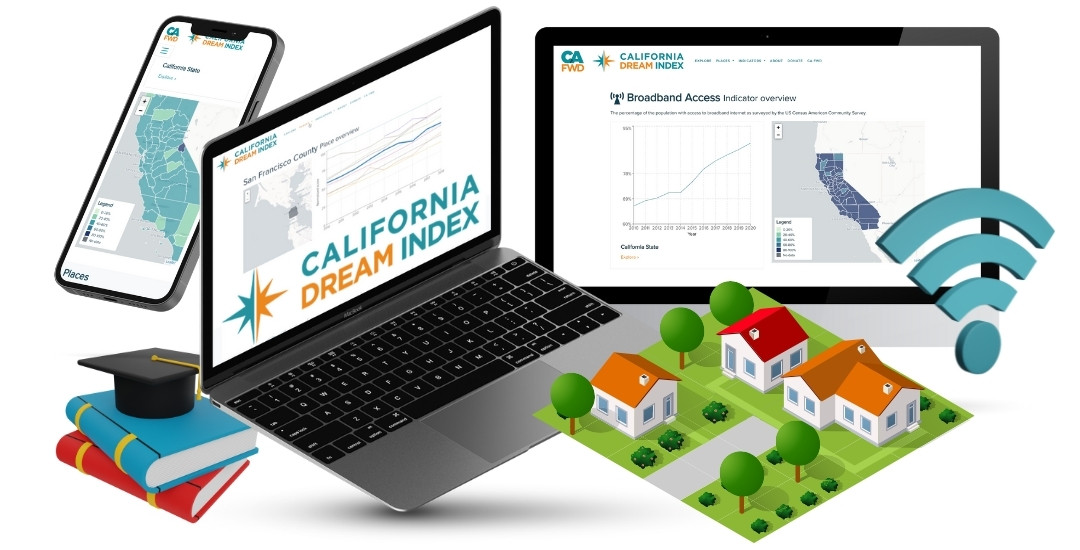
While California saw positive improvements in broadband access and pockets of success across its regions over the past decade, substantial disparities remain across the state, particularly in areas like housing.
The recently released California Dream Index provides ten indicators focused on economic mobility, the critical baseline for achieving a dream of a better life. Those data provide a tractable picture of the baseline conditions – whether or not jobs within a reasonable commute, if housing is attainable, how accessible broadband access is – that are so critical to economic mobility.
Over the past decade, there has been a dramatic growth in broadband access across every region in California. Overall the state saw 35% growth in broadband access across the state and 2% growth from 2019-2020. That growth was fastest in the Central Valley and Inland Empire from 2019-2020 at 4% over the year.

Regionally, the Central Valley also saw significant growth in numerous indicators, albeit from a relatively lower baseline. The region had the highest growth in home ownership of any region at 4% from 2019 to 2020. The biggest need for improvement for the region was commute times, which increased over 1.2 minutes on average from 2019-2020.
Still many disparities across California’s regions and racial demographic groups remain. Most of the state, however, saw striking stagnation in homeownership and the percentage of households paying less than 30% of their income on rent, a standard measure of affordability. The number of Californians that own their homes actually declined over the decade.
The Inland Empire and Central Valley lag the rest of the state in the percentage of children aged 3 and 4 enrolled in early childhood education at 42 and 44 percent respectively. The Bay Area and Sierra Nevada regions led the state at 63 percent in 2020. Overall the statewide average was 48 percent of children enrolled in early childhood education.

There is a wide range across regions in the percentage of residents living in prosperous neighborhoods, which are defined as areas with less than 20% of the population living below the federal poverty line.
The Redwood Coast saw a decline of 17% from 2011 to 2020 in terms of the number of residents living in prosperous neighborhoods. Statewide there was a decline in 7% in the number of Latinos living in prosperous neighborhoods. That figure was 6% for black Californians.
These trends showcase the importance of focused action to ensure that the 2020s are better than the 2010s for all Californians. California Forward leads a movement to ensure that the California Dream is accessible to all. Join us in Bakersfield October 27-28 for our annual California Economic Summit!
This two-day, action oriented event features California’s civic, business, and statewide political leadership. We will build on our achievements investing in broadband access, wildfire mitigation, expanding home ownership and other areas to create inclusive, sustainable growth for everyone.

